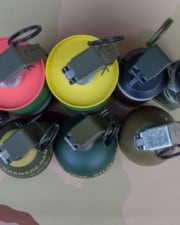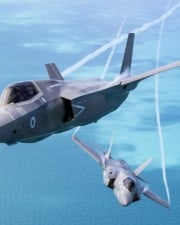Have you ever sat and watched a war film where the main characters are about to die before aircraft come out of nowhere to save the day and wondered what that’s called? It’s called close air support, but what exactly is it and what aircraft are used for it?
Simply put, close air support (CAS) is an aviation-related military tactic where aircraft provide support to forces on the ground. It can encompass bombing, strafing and buzzing enemy forces to protect friendly ones. CAS is generally called in by ground forces through radios and other battlefield communications devices.
CAS is used by militaries all over the world, and is a tactic almost as old as military aviation itself. Whilst are a variety of purpose-built CAS aircraft, almost every multirole and utility
What is Close Air Support?
Close Air Support – also known by the acronym CAS – denotes the military tactic applied in providing air power support to ground forces against an immediate threat they face from the opponent. For example, in modern warfare, fighter jets and attack helicopters are used when helping troops on the ground who encounter problems from enemies nearby.
Ground units contact CAS aircraft through well-established communication networks such as radio or digital methods when they require quick aerial firepower to overcome tactical challenges interrupting their operations.

These aircrafts board a series of weapons like cannons, missiles and rockets amongst others that they use upon instruction given by base station commanders.
Pilots operating CAS aircraft coordinate closely with ground commanders who give orders on specific targets’ locations not only to neutralize hostiles but also prevent incidents such as friendly fires or collateral damage. Hence close attention is needed at all times due to high risks involved while conducting singular strikes on designated targets.
Through this coordination- both forces retain real-time situational awareness, giving room for flexible responses based on the risk involved.
Close Air Support plays a significant factor in modern warfare where it helps suppress enemy threats, provide cover for our troops thus enhancing their effectiveness and survivability during combat activities.
Who Pioneered Close Air Support?
Close-air support (CAS) has matured over decades with various contributions from several militaries and individuals across history. During World War I, the British Royal Flying Corps (RFC) endeavored into direct support of ground troops in battle settings, hence pioneering modern-day close-air support.
This RAF development included reconnaissance missions, artillery spotting missions along with attacking enemy ground objectives providing a significant departure from strategies focused on strategic bombing or aerial combat.
Lieutenant Colonel Hugh Trenchard (who also founded the modern RAF) crucially championed an independent air force that provides vital backing to ground-based installations throughout this period.
His founding thoughts on backing operational needs brought aboard aircraft added importance directed towards aerial assessments of active ground warfare deployments, making him an influential figure behind early iterations of today’s close-air-support ideas.
In recent times, many armed forces have contributed doctrinal clarity for refined techniques used when employing specialized CAS aircraft correctly – expanding upon features from previous military offerings around the world.
Types of Close Air Support
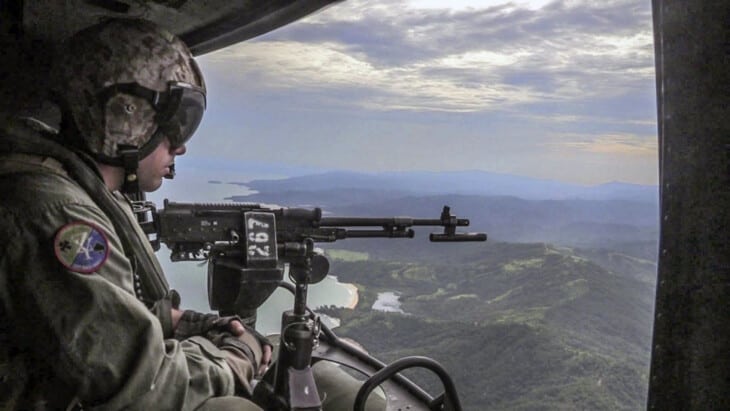
Aerial Fire Support
Close air support is a crucial aspect of modern warfare, with one popular type being Aerial Fire Support where aircraft provide combat troops with direct firepower on the battlefield.
The target objectives can vary – enemy targets like imposing bunkers – but two commonly employed methods are strafing runs where ground-attacking planes fly at low altitudes firing at targets along their tracks – and the use of sophisticated projectiles like guided missiles that traverse long distances before striking enemy positions accurately.
In any instance, aerial fire support plays an essential role in offering quick combat solutions for critical scenarios where blasts from helicopters or jet fighters could make all-rounded differences in how a mission ends up playing out when on duty.
Close Combat Attack
When it comes to receiving much-needed air support during challenging combat situations one tactic stands out known simply as Close Combat Attack (CCA).
Involving fast-moving low-altitude planes with advanced ordnance systems aboard these aircraft fly alongside immediate battle zones making needed direct hits powered by missiles capable of highly precise targeting abilities.
The result? Friendly forces gain a significant upper-hand over enemy lines immediately allowing them to achieve defined objectives all while remaining safe from harm themselves.
CCA missions adhere to strict rules involving speed, accuracy, and overall security for military personnel under duress in action so that they can achieve successful outcomes quickly without sacrificing personal safety.
Battlefield Air Interdiction
A critical component of close air support comes from Battlefield Air Interdiction (BAI) missions designed specifically to deter designated targets within or near the immediate battle zone while obstructing the enemy’s ability to offer reinforcements as well as supplies or maneuvers crucial for front-line effectiveness.
Such flights typically aim at targets such as enemy logistics- strategic assets such as command bases & control infrastructure systems- communication lines-flight paths etc., providing beneficial conditions ultimately useful for friendly operations on ground level themselves.
Essential elements necessary for ensuring battlefield superiority are achieved by strengthening troop units while simultaneously impairing adversaries’ potential influx of support regarding logistic channels often serving a multi-faceted purpose that could help turn battles more favorably.
Armed Reconnaissance
Armed Reconnaissance (AR) missions involve Air Force planes equipped with robust weaponry as well as advanced intelligence-gathering technology such as visual or eavesdropping devices.
The reason for this is that these airplanes need to serve two functions: accessing vital information regarding adversary actions through electronic means while simultaneously being able to fight back against possible threats posed by these adversaries.
By shifting between various types of surveillance measures, AR mission aircraft continuously gather details on enemy locations, activities, and movements.
If certain situations do arise where thorough observation dictates the necessity of taking action against any target identified as highly valuable or positioned in danger zones by utilizing their onboard weapons quickly is not an issue.
AR missions combine the roles of gathering intelligence and conducting offensive actions against identified enemy targets.
Forward Air Control
FAC stands for Forward Air Control – a vital type of close air support that is mainly characterized by the coordination and guidance of aircraft from a forward position near the battlefield.
To make this possible, these professionals work hand in hand with ground units in most cases – serving as an important link between ground forces and air assets.
When it comes to targeting enemy forces, there is no doubt that their real-time target identification, location insights, and target guiding abilities come in handy in facilitating precise engagement by aircraft units fitted for these missions.
To further bolster their relationship with pilots involved in close combat situations while airborne; they articulate specific target locations promptly while also being quick on their feet when adjustments need making based on requirements on the ground force.
With all things considered; this seamless level of collaboration makes the CAS process speedy yet accurate- ultimately enhancing its overall impact while ensuring it aligns favorably with friendly force’s objectives.
Armed Escort
The final, but by no means least important type of Close Air Support (CAS) is armed escort missions whereby military planes provide necessary protection for allied forces’ primary operational stages.
These are essential missions that require diligence because these armed escorts must safeguard friendly airplanes carrying supplies, transport equipment or strike assets from potential threats by engaging anything that could damage it.
By focusing exclusively on ensuring complete defense against all types of danger, armed escort missions enable escorted airplanes to complete critical operations successfully.
What is the Difference Between Close Air Support and Air Interdiction?
The military aviation industry uses two unique concepts: close air support (CAS) and air interdiction.
Their differences inform their specific roles in supporting troops during battles.
Directly supporting troops fighting near enemy lines falls under the mandate of CAS operations done by aircraft assigned for such missions.
Here they prioritize protecting friendly forces primarily through attacking any targets located near them while providing aerial escorting services facilitating their maneuverability around battlegrounds as well as conducting reconnaissance scouting activities needed for effective engagement against enemies in both new and pre-existing threat-oriented target areas unlike those found in air interdiction operations.
On the other hand, air interdictions’ main aim is invading or interfering with an opponent’s vital resources far off where friendly troops usually operate.
A few examples include disrupting access routes such as roads and bridges, interfering with communication networks and targeted enemy armaments such as depots.
These missions are done by high flying aircraft models operating from great altitudes that rely heavily on intensive intelligence gathering through both reconnaissance overflights and reliable ground sources.
What is the US Close Support Aircraft?
At present, the US military uses a variety of close support aircraft to suit different military branches and operational requirements.
Historically, the primary close support aircraft has been the A-10 Warthog, as its design allowed it to receive lots of enemy fire (including the loss of a wing once!) and continue flying.
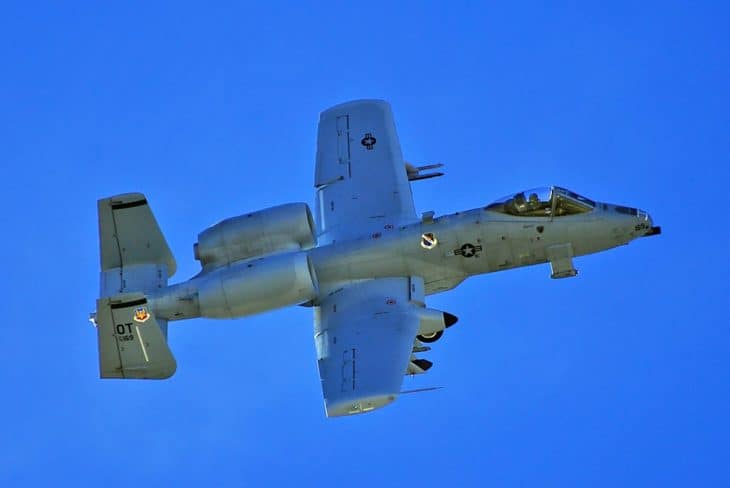
Its design also allowed it to be equipped with a variety of guns, cannons and air-to-ground missiles, rockets and bombs, which made it perfect for nearly every CAS environment.
However, the A-10 is an aging airframe and as such is currently in the process of being replaced in US service by the F-35A, which is intended to eventually serve as the primary US close support aircraft.
In addition to the A-10, the military also uses a variety of other aircraft types, including the F-15E Strike Eagle, F-16 fighter jets and the AH-64 Apache attack helicopter.
What is the Fastest Close Support Aircraft?
As of the time of writing, the fastest close support aircraft is the Fairchild Republic A-10 Thunderbolt II, commonly known as the A-10 Warthog. The A-10 is a specialized close air support aircraft designed for providing close air support to ground forces.
The A-10 Warthog has a top speed of approximately 450 knots (518 mph or 833 km/h). Its speed allows it to quickly respond to requests for close air support and engage targets in a timely manner.
The aircraft is equipped with a powerful 30mm GAU-8 Avenger rotary cannon, which is highly effective against armored vehicles and other ground targets.
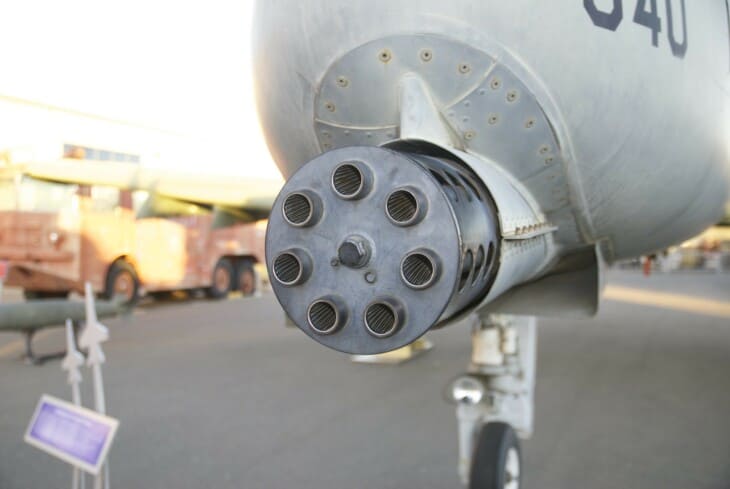
What is the Best Close Support Aircraft?
Since the “invention” of close air support back in WWI, literally hundreds of different aircraft have been used in this role, almost all of which have excelled in that role and could easily be considered one of the “best”. However, the A-10 Warthog is, at least in my eyes, the best CAS aircraft ever built.
The effectiveness of the A-10 Thunderbolt II is evidenced by its design objectives emphasizing survivability and lethality in combined endeavors amongst others integrated into safety measures for pilots such as cockpit armor that ensures maximum effectiveness during targeted engagements without pilots’ jeopardy despite sophisticated environmental influences.

The GAU-8 Avenger rotary cannon system is a hallmark feature excelling at delivering exceptional firepower against targeted ground-based threats where optimal precision weapons are required given its heightened intelligence precision support features’ capability-enhancing outcomes.
Moreover, wide-ranging ordnance alternatives allow flexibility according to what designers desired in a mission. Durability is a hallmark feature of the aircraft, and it can withstand significant damage without compromising its ability to continue flying due to reinforced system redundancy.
Advanced intelligence sensors, targeting systems, and avionics enable precise delivery of ordnance while providing close support to ground forces. The optimal results are amped through an effective communication system that affords coordination through collaboration mechanisms.
Noteworthy is that the A-10 operational philosophy attaches particular importance to a close integration concept with ground forces – essential in maximizing its effectiveness via proper understanding of troop’s requirements and providing timely responses aligned to purpose in accomplishing close-in tasks effectively while optimizing efficacy in other primary mission functions.
What was The Best Close Air Support Aircraft in WWII?
During World War II, the Republic P-47 Thunderbolt emerged as one of the top contenders for the best close air support (CAS) aircraft. The P-47, also known as the “Jug,” possessed several qualities that made it highly effective in this role.
The P-47 Thunderbolt stands out as an airplane that could handle a variety of roles during World War II – bomber escort, air superiority, ground attacks – positioning itself perfectly for integration into multiple deployments. Its heavy and fortified design with substantial armor made it possible to protect pilots while carrying out bombing or strafing runs against the ground.

Since its firepower leaned on the eight .50 caliber machine guns carried forward, it could strike heavy blows at designated ground targets, performing remarkably well for attack missions. With a capacity for additional payloads like rockets and external fuel tanks; It added to its already admiral flexibility boosting further impetus at accomplishing successful strike engagements.
This warplane had lasting range plus could remain in operation over extended periods making it ideal for indispensable close-air-support efforts on-ground troops.
While praised as one of WWII’s best CAS planes; other airplanes such as the Hawker Typhoon provided admirable service in this role as well.
Several factors impacted the success rates of different aircraft during CAS missions inclusive of terrain variations, enemy defenses and mission specifications.
What was the Best Close Air Support Aircraft in The Vietnam War?
During the Vietnam War, one aircraft stood tall among all available options – none other than the legendary Huey helicopter that surpassed Thunderbolt and Skyraider aircraft claimed to be the best close air support (CAS) aircraft.
One primary advantage of a helicopter design over fixed-wing planes is a notable increase in flexibility allowing it to maneuver through complex terrains such as dense jungles or congested urban areas without difficulties regardless of gridded environment forcing; a unique feature that sets it apart from other competitors.
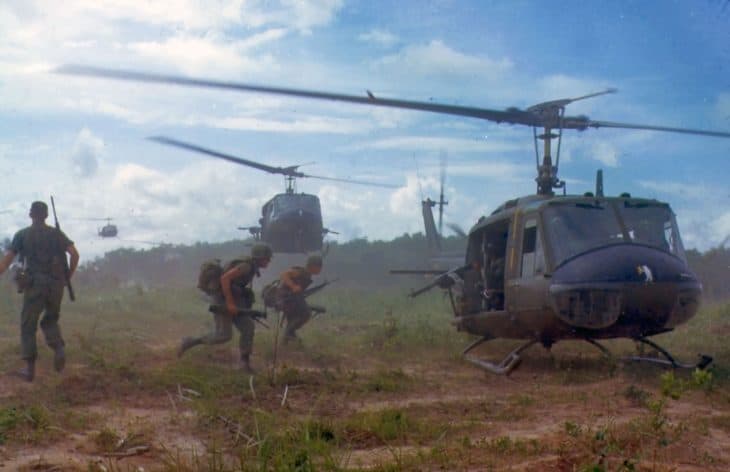
In terms of troop transport capacity, this iconic aircraft owned higher troop carrying capacity compared to all available options whose dependability never failed enhancing swift deployment or extraction from combat zones ensuring quick access was given while proving invaluable support during times intense conflict scenarios arose dictated by combat requirements forcing quick actions which mattered for survival needs at times.
Real-time direct communication with troops facilitated coordination between air and ground units ensuring exceptional results when it came time to provide fire support resulting in superior responsiveness situations involving an urgent need for critical decisions making under duress.
Versatility on varied roles such as armed escort, aerial rocket artillery or gunship operations was evident due to its wide-ranging armaments such as machine guns, rockets, and door-mounted miniguns that proved useful when engaging in enemy targets or suppressive fire services.
This legendary aircraft played a crucial role in medical evacuation (MEDEVAC) missions saving countless lives by providing rapid extraction capabilities of wounded personnel from the battlefield while providing immediate medical attention.
The Thunderbolt and Skyraider represented excellent options for supporting ground troops when considering their capabilities as CAS aircraft.
However, the Huey’s unique qualities as a helicopter – namely its capability to accommodate various needs from troop transportation to seamless coordination with ground forces and MEDEVAC roles – made it unmatched in specific CAS situations where traditional planes failed to deliver.
Although the Thunderbolt and Skyraider also boasted their own specialties, they performed commendably during various CAS missions executed during the Vietnam War.
Related Posts




